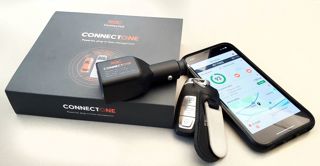Greville Coe, managing director at Radius Telematics
Recent government figures show that in August 2022 alone, almost 2,000 registered businesses went bust in England and Wales – a whopping 43% increase on the same period last year.
From rising energy bills to the ongoing workforce crisis, many small businesses are feeling the pinch.
Against that backdrop of uncertainty, it’s time for small businesses who run commercial vehicles to harness to the power of telematics data to impact margin.
By utilising telematics data to streamline operations, businesses will see a reduction in costs and an increase in productivity, whether they have one vehicle or a whole fleet to manage.
Any business, no matter the size, will face common issues when managing vehicles, leading to business inefficiencies.
This could be anything from fuel costs that spiral out of control to difficulty with an impatient driver.
Yet, the consequences of these problems affect small to medium-sized businesses (SMEs) differently.
Budgets are naturally smaller and those who manage your vehicles are often juggling other tasks, too.
There are simply fewer resources available to perform regular checks on vehicle performance.
So how can telematics improve cost efficiencies for SMEs?
In the face of the cost of business crisis, telematics empowers businesses to:
Manage a mobile workforce
Before telematics, small businesses were reliant on their drivers to understand the situation out on the road.
Now, it is possible to see all vehicles from the office or via a mobile app.
This means businesses can enjoy more accurate ETAs for delivery or on-site arrival, a more productive workforce, lower fuel costs and more accurate data on mileage: all factors which impact margin.
Set alerts for areas of interest
Transport managers can use the geofence feature within telematics systems to ringfence places on the map that need to be monitored.
This could be the office, a depot or a predefined area.
This tool can help with unauthorised use of your vehicles out of hours or with inefficient use of time.
It can also be used to keep track of and group supplier visits or adjust sales territories if necessary.
All aspects which, in the face of rising costs for small businesses, can help cut costs.
Review driver performance
A telematics device not only tracks a vehicle but can also provide reports on driver behaviour.
Businesses will know if a corner is taken too sharply or if brakes are slammed on too hard.
Some of this behaviour might damage cargo and result in an expensive claim.
Other behaviours could impact your business reputation if the driver presents a danger to other road users – ultimately, effecting margin.
Decrease administrative time spent on marrying fuel and mileage
Telematics can be used to cut down on administration time.
Reliable fleet data is at the fingertips of the small business, enabling managers to monitor fuel costs more closely and even integrate the telematics system with fuel cards.
If mileage is a drag, business and private mileage can be separated for records, helping with end of year tax reports.
Utilise the data for wider cost saving
Transport managers can use the data from telematics to look at the bigger picture.
Would their fleet or certain vehicles be suitable to swap and transition to electric?
Can the data from any onboard cameras and black boxes be shared or used by the insurance company to help reduce costs?
The advantages of telematics can go wider than helping the transport manager everyday – and can be very successful in helping maximise margins.
Radius Telematics understand that both time and money are precious for small businesses, especially in the current environment as they look to overcome the challenges they face.





















Login to comment
Comments
No comments have been made yet.